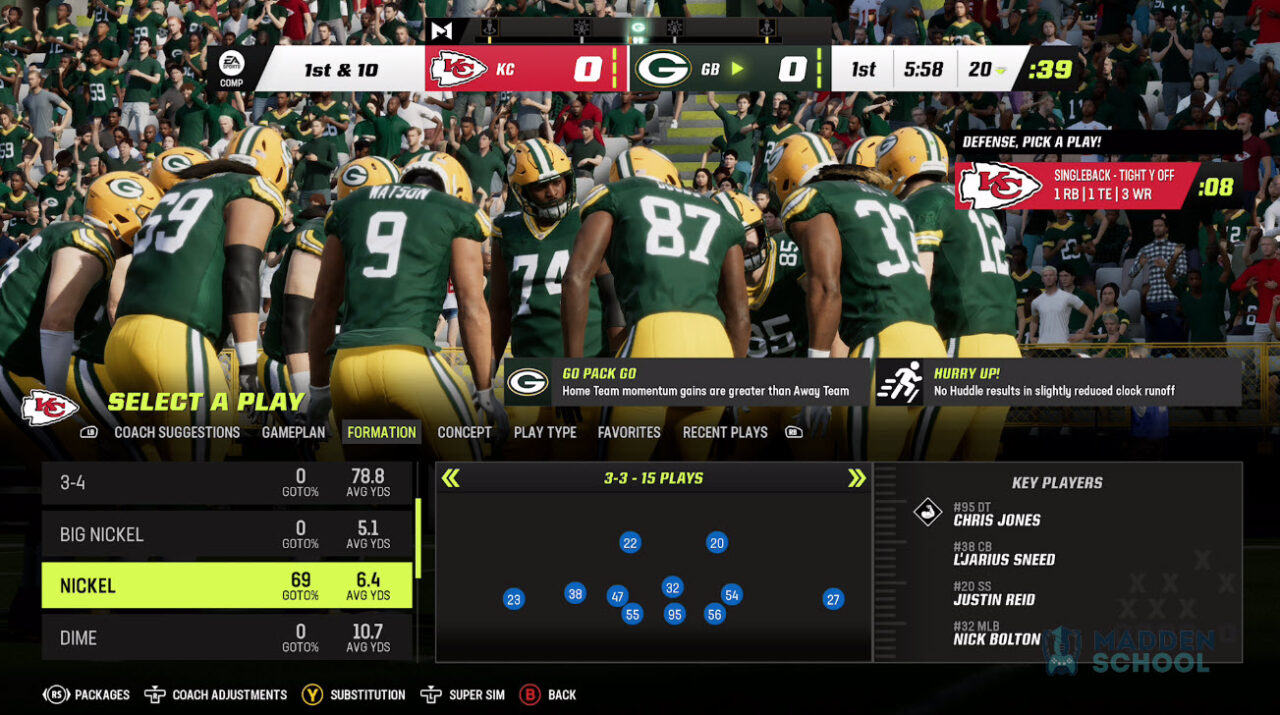The realm of college football is constantly evolving, and defensive strategies play a crucial role in a team's success. One of the most critical aspects of any successful NCAA football program is having an effective defensive playbook. In this article, we will delve into the best defensive playbook for NCAA 25, analyzing its components, strategies, and how it can elevate a team's performance on the field.
The NCAA 25 defensive playbook is designed to adapt to the modern game, where offenses are becoming increasingly sophisticated. By understanding the key elements of this playbook, coaches and players can enhance their defensive prowess and make significant strides in their performance. Whether you are a player looking to improve your skills or a coach seeking to implement a successful defense, this guide will provide valuable insights.
Throughout this article, we will cover various aspects of the NCAA 25 defensive playbook, including its fundamental principles, key formations, and strategies for different game situations. By the end, you will have a comprehensive understanding of how to maximize the effectiveness of your defensive playbook in NCAA football.
Table of Contents
- Defensive Principles
- Key Formations
- Coverage Strategies
- Run Defense Techniques
- Pass Rush Techniques
- Adjustments and Reads
- Implementing the Playbook
- Conclusion
Defensive Principles
The foundation of the NCAA 25 defensive playbook lies in its core principles. Understanding these principles is vital for any defensive unit aiming for success. Here are the key defensive principles:
- Discipline: Players must adhere to their assignments and maintain responsibility throughout the play.
- Communication: Effective communication among players ensures that everyone is on the same page, especially in complex defensive schemes.
- Physicality: A strong defense requires players to be physical at the point of attack, disrupting the offense's rhythm.
- Adaptability: The ability to adjust to different offensive formations and plays is crucial for a successful defense.
Key Formations
The NCAA 25 defensive playbook features several formations that cater to different game situations. Each formation has its strengths and weaknesses, and understanding when to use them is essential.
4-3 Defense
The 4-3 defense is one of the most popular formations in college football. It consists of four defensive linemen and three linebackers, providing a balanced approach to defending both the run and pass. This formation allows for versatility in play calling and can easily adapt to various offensive strategies.
3-4 Defense
The 3-4 defense features three defensive linemen and four linebackers. This setup emphasizes speed and athleticism, making it effective against spread offenses. The extra linebacker allows for more flexibility in coverage and blitzing, which can confuse opposing quarterbacks.
Coverage Strategies
Coverage is a critical component of any defensive playbook. The NCAA 25 playbook includes several coverage strategies designed to counteract various passing offenses.
Man-to-Man Coverage
In man-to-man coverage, each defensive back is assigned to cover a specific receiver. This strategy is effective against teams with strong wide receivers, as it allows for tight coverage and the opportunity to create turnovers.
Zone Coverage
Zone coverage involves defenders covering specific areas of the field rather than individual players. This strategy can be effective against offenses that rely on quick passes and can help minimize big plays.
Run Defense Techniques
Stopping the run is a critical aspect of any defensive scheme. The NCAA 25 playbook includes several techniques to enhance run defense.
- Gap Control: Each player must understand their gap responsibilities to prevent running backs from finding open lanes.
- Wrap-Up Tackling: Emphasizing proper tackling techniques helps minimize yards after contact.
- Linebacker Reads: Linebackers must be trained to read the play quickly, allowing them to react effectively to run plays.
Pass Rush Techniques
A successful pass rush can disrupt opposing quarterbacks and lead to turnovers. The NCAA 25 defensive playbook incorporates several techniques for effective pass rushing.
Speed Rush
The speed rush involves defensive ends using their quickness to get around offensive tackles and pressure the quarterback. This technique is particularly effective against slower offensive linemen.
Power Rush
The power rush relies on strength and leverage to push through offensive linemen. This technique is effective against teams with strong running games, as it allows defensive linemen to disrupt plays in the backfield.
Adjustments and Reads
In-game adjustments are crucial for a successful defense. The NCAA 25 playbook emphasizes the importance of making real-time adjustments based on the opposing offense's tendencies.
- Pre-Snap Reads: Defenders must be trained to recognize offensive formations and anticipate plays before the snap.
- Post-Snap Adjustments: Players must be adaptable, ready to shift their responsibilities based on the offense's actions.
Implementing the Playbook
Successfully implementing the NCAA 25 defensive playbook requires thorough training and preparation. Coaches must develop practice plans that emphasize the key aspects of the playbook, ensuring that players understand their roles and responsibilities.
Additionally, utilizing film study and analysis can help players recognize patterns in opposing offenses, allowing them to anticipate plays and make better decisions on the field.
Conclusion
In summary, the NCAA 25 defensive playbook is a comprehensive resource for coaches and players looking to improve their defensive strategies. By focusing on core principles, key formations, coverage strategies, run and pass rush techniques, and in-game adjustments, teams can significantly enhance their performance on the field.
As you implement these strategies, remember the importance of discipline, communication, and adaptability. Embrace the challenge of mastering the defensive playbook, and your team will be well-equipped to face any opponent. Feel free to leave a comment, share this article, or explore more resources on our site!
Thank you for reading, and we hope to see you back for more insights into the world of college football!




